March 18, 2014
RIBA submits plans for new offices near its landmark Art Deco HQ
The Royal Institute of British Architects (RIBA) has submitted a planning application for the creation of new high-quality new offices near its London headquarters. 76 Portland Place, London W1, which currently houses the Institute of Physics is being designed by a team led by award-winning architects Theis and Khan and is next door but one to RIBA’s Art Deco landmark building at 66 Portland Place. Built in 1958, it was designed by Howard V Lobb and Partners and had a ground floor extension added in the mid-1990s. The planning application includes the complete refurbishment and alterations of the existing office building to create office spaces and meeting rooms for around 180 staff – located over five floors; including first to sixth in the main building and first and second in the mews building. (more…)






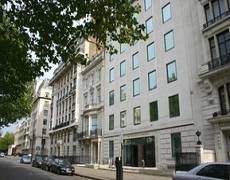




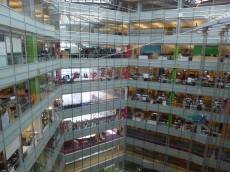



 The finest closing sentence of any novel in my opinion is that in The Great Gatsby. “So we beat on, boats against the current, borne back ceaselessly into the past.” It is a reference to the futility of our attempts to escape the past, even as we look to the future, dreaming of how “tomorrow we will run faster, stretch out our arms farther”. F Scott Fitzgerald was referring to people when he wrote it, and Jay Gatsby in particular, but it’s a passage that resonates in a number of ways, especially in those areas of our lives that deal most intimately with what it means to be human. And one of these is self-evidently the workplace, where any articular attempt to define the ideal office for a particular time, including the future, is complicated by the fact that we must always meet the needs of the beasts that inhabit it. Regardless of the tools we have at our disposal with which to work more effectively, or just plain ‘more’ we remain fundamentally the same animals we were thousands of years ago.
The finest closing sentence of any novel in my opinion is that in The Great Gatsby. “So we beat on, boats against the current, borne back ceaselessly into the past.” It is a reference to the futility of our attempts to escape the past, even as we look to the future, dreaming of how “tomorrow we will run faster, stretch out our arms farther”. F Scott Fitzgerald was referring to people when he wrote it, and Jay Gatsby in particular, but it’s a passage that resonates in a number of ways, especially in those areas of our lives that deal most intimately with what it means to be human. And one of these is self-evidently the workplace, where any articular attempt to define the ideal office for a particular time, including the future, is complicated by the fact that we must always meet the needs of the beasts that inhabit it. Regardless of the tools we have at our disposal with which to work more effectively, or just plain ‘more’ we remain fundamentally the same animals we were thousands of years ago.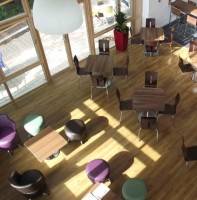




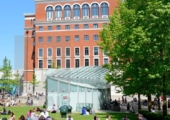


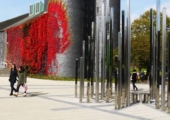

November 13, 2013
Workplace Week highlights the changing shape of the office
by Richard Byatt • Comment, Events, Facilities management, Workplace design
‘High Street’ at Network Rail’s Milton Keynes base
This year’s Workplace Week which took place last week was a great success, with more people participating and more money raised for charity. Across the week, over 500 people took part, visiting innovative workplaces, attending the Workplace Week Convention or going along to one of the many Fringe events. Workplace Week is organised by Advanced Workplace Associates and supported by CoreNet Global, BCS, RICS, FMA and BIFM. All proceeds go to the Children in Need charity. Around 60 people joined the speakers at the headquarters of PWC on London’s Southbank for the Workplace Week Convention to discuss ‘Driving productivity through the connected organisation.’ The informal atmosphere and roundtable format encouraged participation, with a focus on developments in organisational design, change management and technology.
(more…)